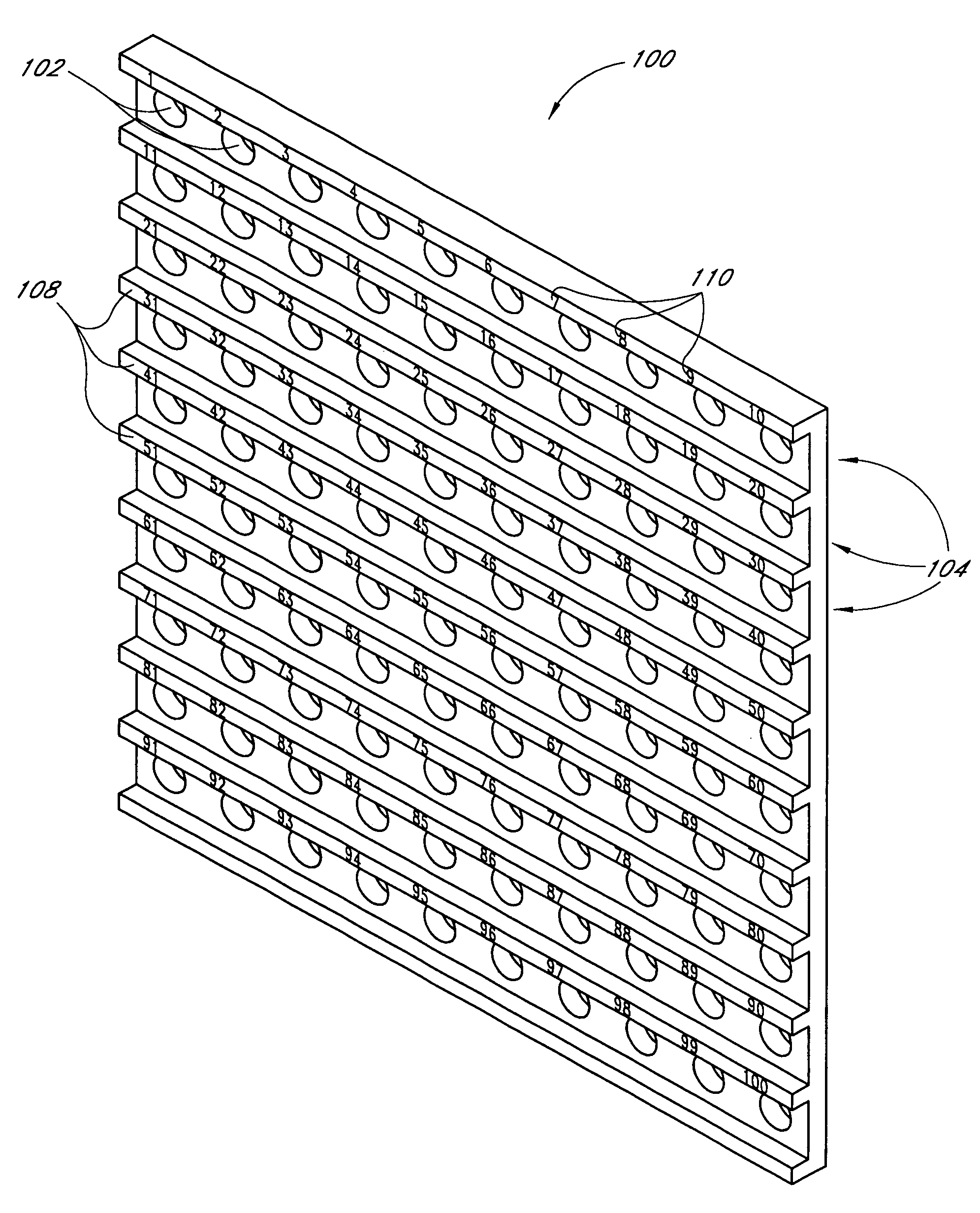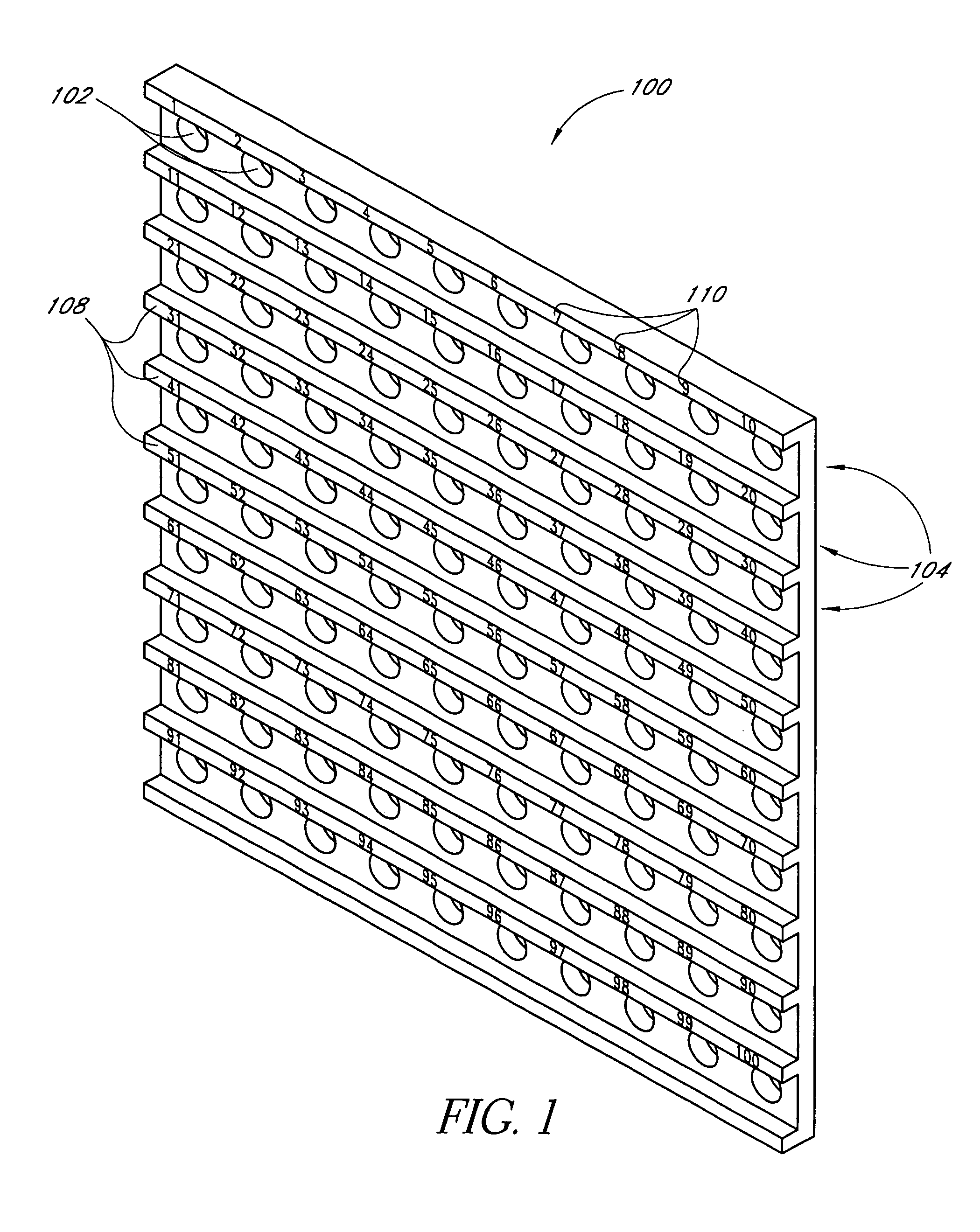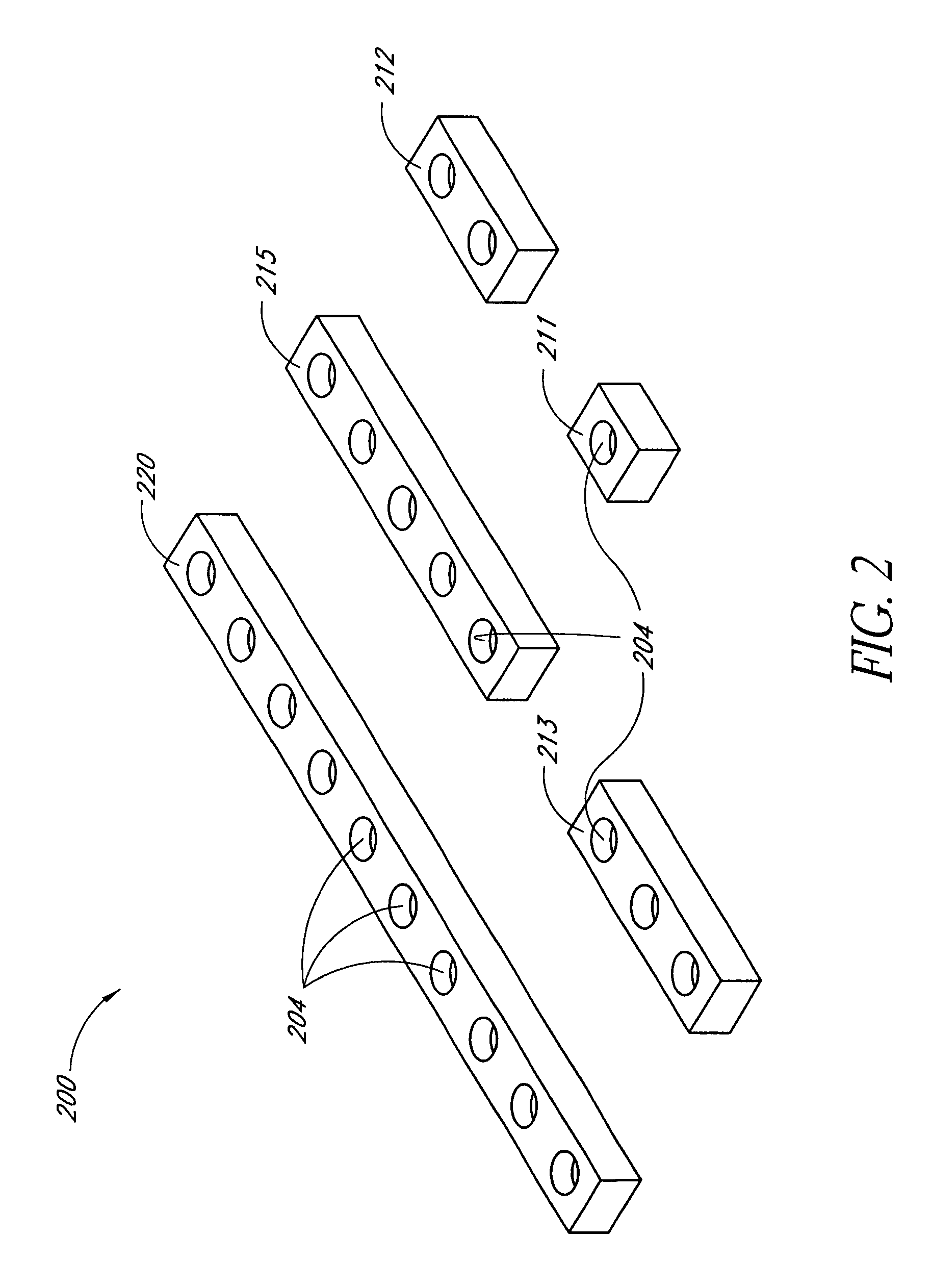Mathematics teaching tool
a teaching tool and math technology, applied in the field of mathematics teaching tools, can solve the problems of ineffective or practical, inability to adequately emphasize the number sense and the concept of place value in teaching basic math facts and concepts, and achieve the effect of facilitating a deeper understanding of numbers and being easy to visualize and mentally process
- Summary
- Abstract
- Description
- Claims
- Application Information
AI Technical Summary
Benefits of technology
Problems solved by technology
Method used
Image
Examples
Embodiment Construction
[0017]Introduction.
[0018]As described above, existing mathematics education devices often fail to teach or adequately emphasize the concept of place value while teaching basic math facts and concepts. For example, while the base ten blocks system can be used to teach place value, it is difficult and cumbersome to use when teaching basic math facts such as 5+8=13 or to perform arithmetic operations because the numbers 2 through 9 must be represented by grouping together multiple ones pieces. To the contrary, the teaching of math facts and arithmetic operations is more easily accomplished using the number rods system because numbers are more easily represented using the various numbered pieces. However, the number rods system has the drawback of failing to adequately teach the concept of place value because the number rods are often used independent of any framework that would emphasize base ten numbers. Even when the rods are used with a track, the tracks are continuous and are not g...
PUM
 Login to View More
Login to View More Abstract
Description
Claims
Application Information
 Login to View More
Login to View More - R&D
- Intellectual Property
- Life Sciences
- Materials
- Tech Scout
- Unparalleled Data Quality
- Higher Quality Content
- 60% Fewer Hallucinations
Browse by: Latest US Patents, China's latest patents, Technical Efficacy Thesaurus, Application Domain, Technology Topic, Popular Technical Reports.
© 2025 PatSnap. All rights reserved.Legal|Privacy policy|Modern Slavery Act Transparency Statement|Sitemap|About US| Contact US: help@patsnap.com



